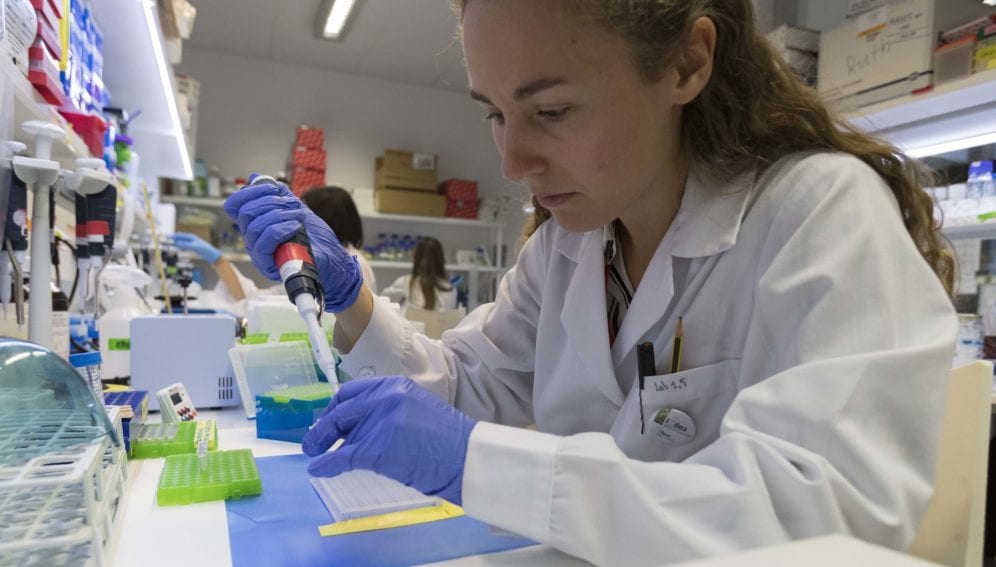02/01/20
Three tropical diseases targeted in push for new drugs

Send to a friend
The details you provide on this page will not be used to send unsolicited email, and will not be sold to a 3rd party. See privacy policy.
[SÃO PAULO] An international consortium led by Brazilian researchers hopes to speed up the discovery of new drugs to be used in the treatment of malaria, visceral leishmaniasis, and Chagas disease.
Chagas and leishmaniasis are categorised as neglected tropical diseases because they affect mainly poor populations in low-income countries and attract less treatment and research funding than major diseases like tuberculosis and HIV/AIDS.
The consortium involves researchers at the universities of Campinas (Unicamp) and São Paulo (USP), both in São Paulo state, and the international organisations Medicines for Malaria Venture (MMV) and Drugs for Neglected Diseases initiative (DNDi).
“Our goal is to deliver a therapeutic alternative that brings a little more quality of life to the patient during treatment,”
Jadel Kratz, drug discovery manager, DNDi
With an investment of about US$ 10.7 million from participants over the next five years, researchers expect to produce compounds that can be developed into drugs to combat the three tropical diseases.
Jadel Kratz, drug discovery manager at DNDi in Latin America, told SciDev.Net: “The partnership will also support the training of new specialists in the treatment of neglected diseases at Brazilian universities while bringing new job opportunities and infrastructure investments to these institutions.”
The task of analysing and preparing a new antimalarial drug will be divided between the synthetic organic chemistry laboratory of the University of Campinas and Switzerland-based MMV, which focuses on reducing the burden of malaria in endemic countries.
Carlos Dias, a chemist at Unicamp and consortium coordinator, told SciDev.Net: “By analysing the structure of molecules included in the MMV’s portfolio, we will try to identify those that may be used to treat malaria in a single dose, avoiding cases of drug resistance.”
MMV maintains a database of molecules ready to be studied, synthesised and used in the development of new medications.
“The idea is to develop a pill capable of maintaining a high enough concentration in blood plasma to eliminate the malaria parasite in up to seven days,” Dias added. Currently, people infected have to take drugs every day for many days. This is the case for artemisinin, a drug used to treat malaria, obtained from the herb Artemisia annua and used against the protozoan Plasmodium falciparum, the most lethal malaria-causing parasite.
However, since the 2000s, artemisinin started losing some of its potency against the disease in countries in Africa and Southeast Asia.
In 2018 there were an estimated 228 million cases of malaria worldwide, resulting in 405, 000 deaths, according to the World Health Organization (WHO). Ninety-three per cent of those cases were in the Africa region.
Unicamp’s chemistry laboratory will also work with the University of São Paulo’s centre for structural molecular biotechnology and the DNDi to develop new drugs against Chagas disease and visceral leishmaniasis, the most severe form of the potentially fatal skin disease spread by sandflies.
The DNDi is an offshoot of the humanitarian organisation Doctors without Borders (MSF) that enters into partnerships to research and make available new treatments for neglected diseases.
It is estimated that 8 million people globally are infected with Trypanosoma cruzi, responsible for Chagas disease. The debilitating disease is one of Latin America’s biggest public health concerns, causing more than 10,000 deaths each year.
There are currently only two drugs available for Chagas disease: nifurtimox and benznidazole. “Both were discovered half a century ago, require prolonged treatment (60 to 90 days) and cause undesirable side effects,” Kratz explained.
Drugs used for leishmaniasis also have serious drawbacks in terms of safety, strength, stability and cost. “They have low tolerability, long duration and are difficult to administer,” said Kratz.“Our goal is to deliver a therapeutic alternative that brings a little more quality of life to the patient during treatment,” he added.
Daniel Martins-de-Souza, a biochemist at Unicamp, says the initiative is important for developing countries in Latin America and other regions where these diseases represent a major public health problem.
“It seems that this issue is now being taken seriously by researchers and funding agencies,” he said. “Although it is not easy developing new medicines, the consortium brings together all the essential elements for success in finding new drugs for these neglected diseases.”
“We must not accept the existence of diseases of this kind nowadays,” he added.
This article was produced by SciDev.Net’s Latin America & Caribbean desk and edited for clarity.
The consortium for the development of new drugs for neglected diseases is partially supported by FAPESP, a donor of SciDev.Net.













